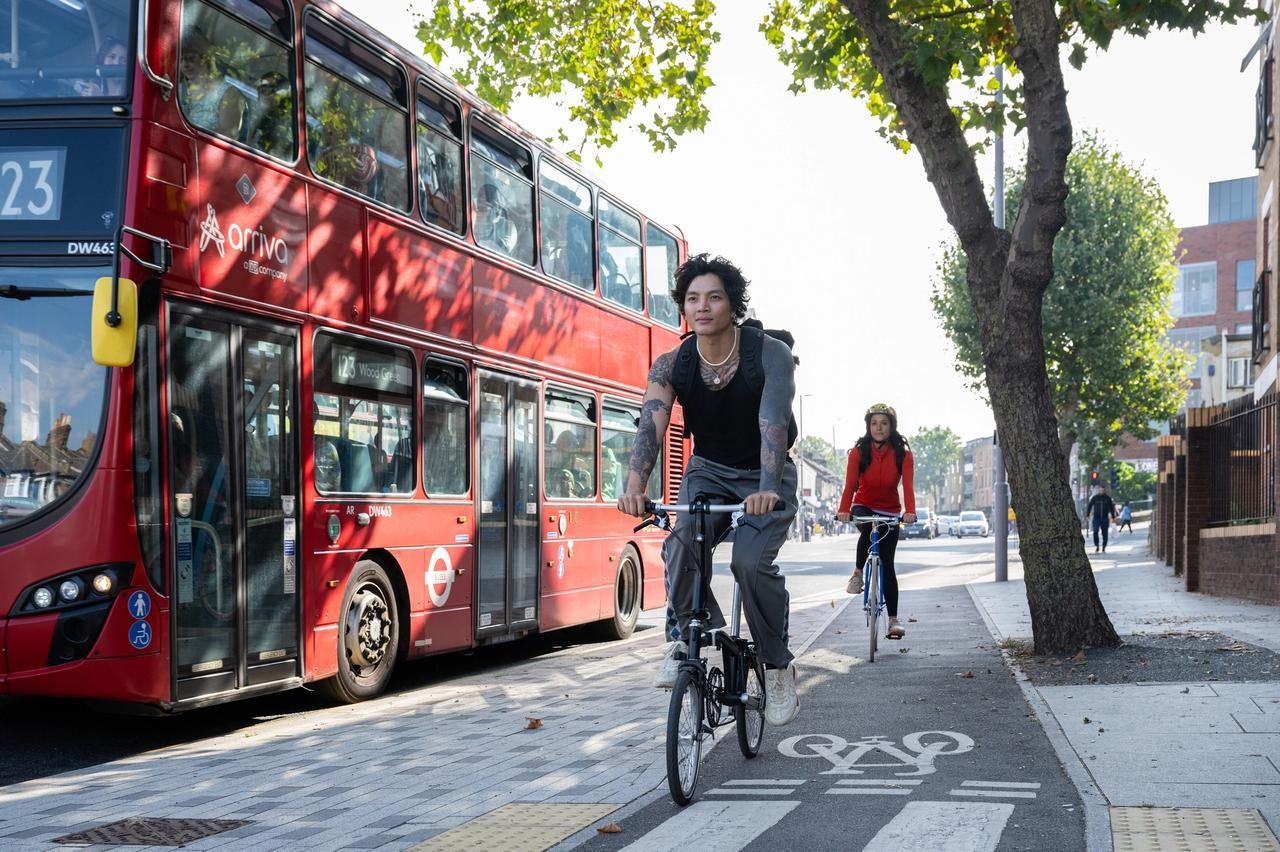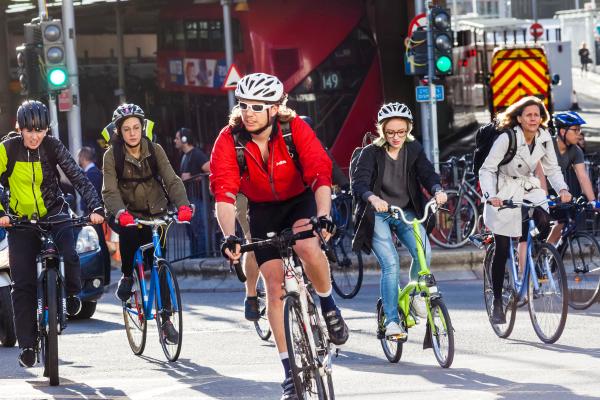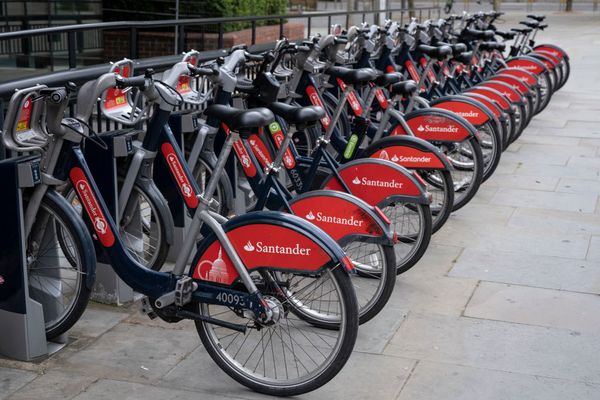Unsurprising but significant: Data shows bike lanes get people cycling and improve perceptions of public spaces
The findings from a European Cyclists Federation survey may seem intuitive but the hard data will give advocates a platform to push for cycling infrastructure
James Howell-Jones
Junior Writer
© Transport for London
A bike lane in London
New research from the European Cyclists' Federation (ECF), an advocacy group based in Brussels, has confirmed that if a city has more bike lanes, more people will cycle. The results will not be a surprise to most cyclists, but they give campaigners and urban planners a substantial footing to argue for more cycling infrastructure in towns and cities around the world.
Alongside this headline result, the research has shown that residents rate public spaces higher in cities with more cycling infrastructure, demonstrating that more bike lanes makes cities more pleasant for everyone, even those of us who do not ride a bike.
How the study worked
The research combined a large-scale quality of life survey from the European Commission with existing research into cycling infrastructure from the ECF.
The European Commission survey interviewed over 70,000 people from cities across Europe, investigating the factors that influence quality of life. The survey covered 83 cities in both EU and non-EU countries, including the UK, Turkey, Ukraine, the Western Balkans, and Scandinavia.
Among the range of questions, which covered everything from safety to finances and culture, was a question about cycling. The 70,000 survey respondents were asked whether they use cycling as their main mode of transportation on a typical day.

© GCN
More bike lanes = happier cities, according to the research
The ECF combined the data from the European Commission with their own data from their report, 'Quantifying Europe’s Cycling Infrastructure using OpenStreetMap', which compared the amount of cycling infrastructure between cities across Europe.
The ECF compared cities by quantifying how many kilometres of cycling infrastructure there was in each city in proportion to the number of kilometres of total road infrastructure. Taking those figures together as a ratio, they could rank each city for its level of cycling infrastructure.
With a clear picture of how much cycling infrastructure there was in each city, they could compare those results to the quality of life survey and look for correlations.
More cycling infrastructure means more people cycle
To hear more about the findings, and to understand the methodology, we spoke to Holger Haubold, the ECF’s Director of Data.
The clearest finding, and the one that is the most important for the ECF’s role as advocates for cycling, was that there was strong correlation between the amount of cycling infrastructure in a city and the amount of people who say they use cycling as their main mode of transport, as Holger explains.
"So if you have lots of cycling infrastructure, people will also cycle more,” he says. “It might seem obvious, but for many politicians it’s not obvious yet that if you invest in cycling infrastructure, people will also cycle more, with all the benefits that this brings, in terms of public health through physical activity, in terms of congestion reduction, in terms of, of course, climate change.”
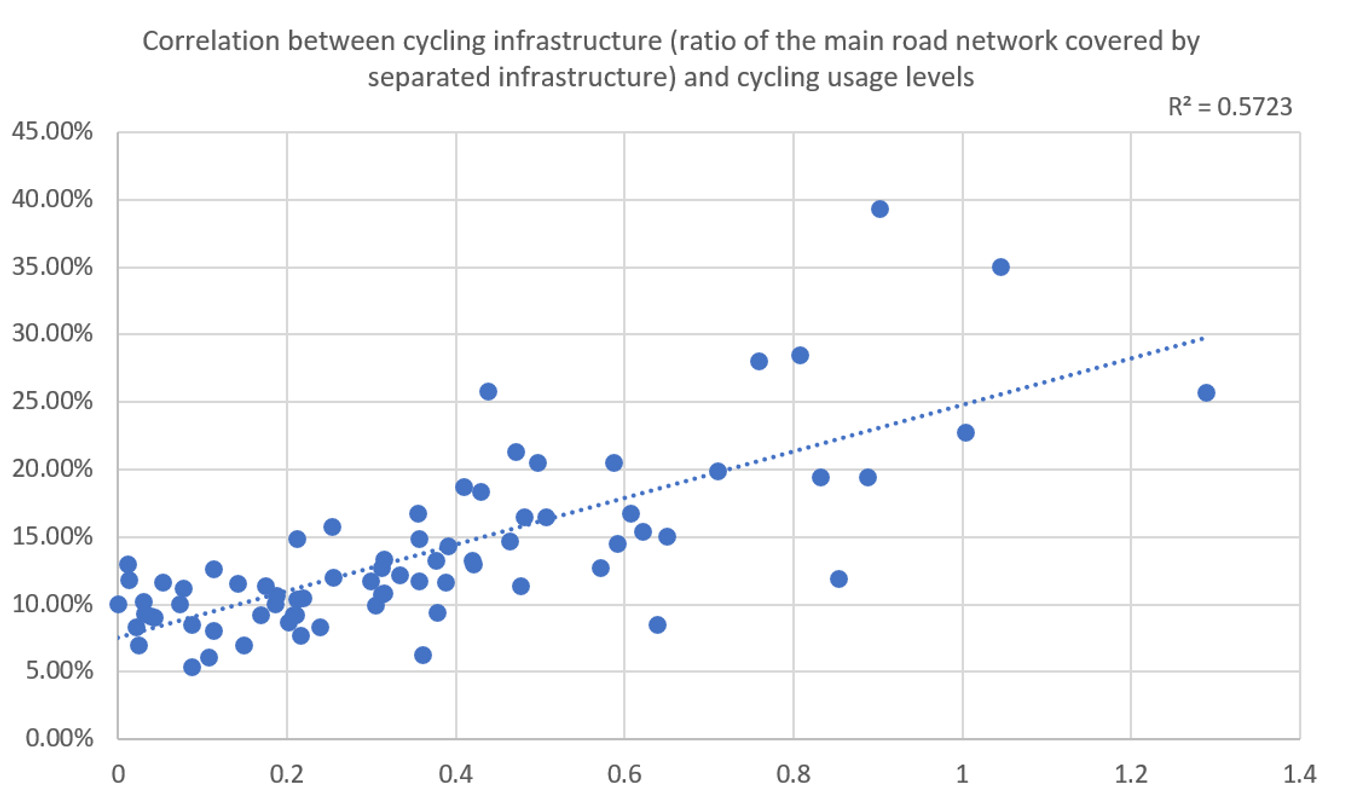
© European Cyclists' Federation
More bike lanes means more cyclists, says ECF data
For many of us, this will not be a surprise. Dedicated bike lanes that protect us from cars make cyclists feel safer, and research has shown that safety concerns are the number one reason that people do not get on a bike.
This research turns a common-sense assumption into a statistical fact. For advocates for cycling infrastructure, or for road designers looking for reasons to design for cyclists, this insight is invaluable.
Read more: Seven out of ten people in England never ride a bike, government statistics show
People are happier with public spaces in cities with more cycling infrastructure
The survey data also revealed that cycling infrastructure improves perceptions of public spaces, proving that bike lanes make cities more pleasant for everyone, whether you are a cyclist or not.
“There was a specific question in the quality of life survey on how satisfied people are with public spaces in their city,” explains Holger.
Again, the cities that scored well for this question were the cities with the highest proportion of cycle lanes.
“There is a clear correlation between how satisfied people are with public spaces in the city and the existence of cycling infrastructure.”
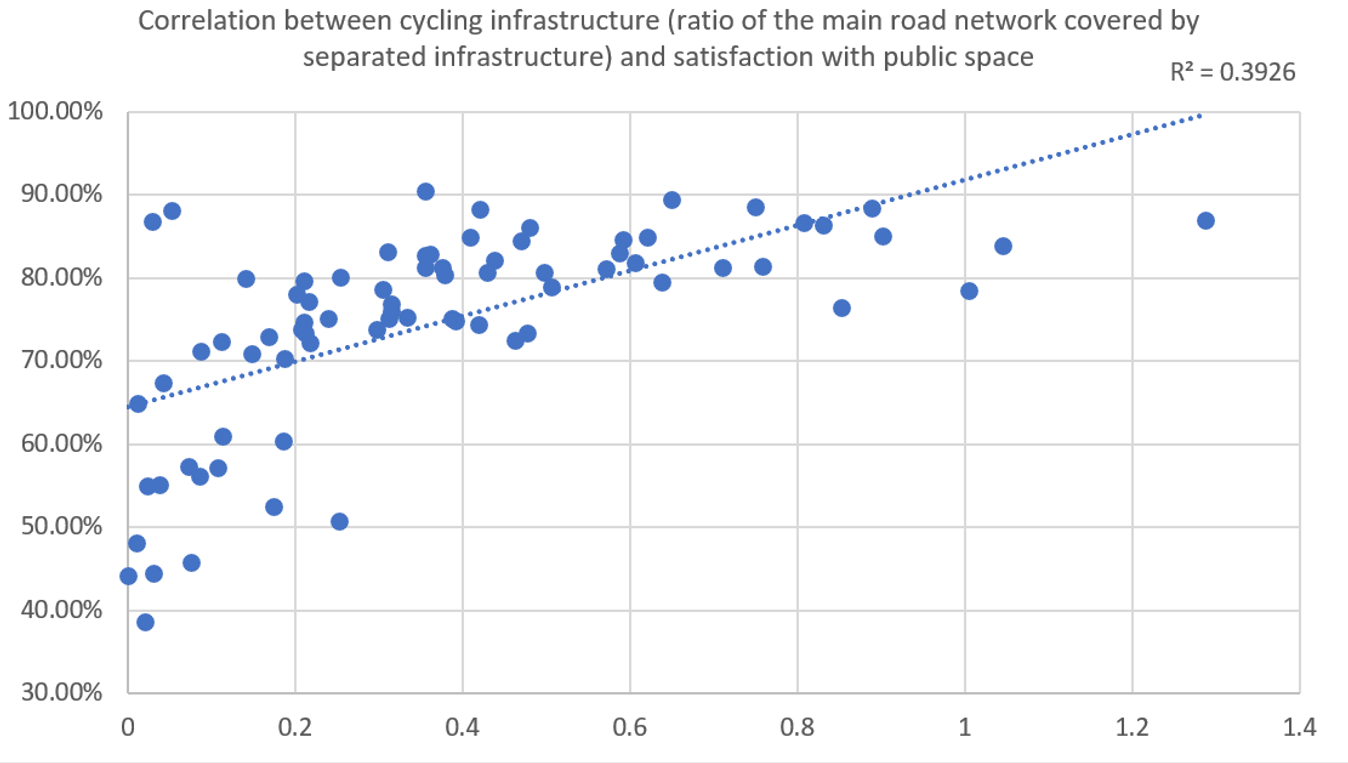
© European Cyclists' Federation
People are happier with public spaces when there is more cycling infrastructure
This finding has broad implications for planners and governments also. It tackles that ever-present accusation that by building expensive cycling infrastructure, authorities are building for the minority of people who ride bikes.
In fact, more infrastructure improves public spaces for everyone, cyclists or otherwise.
But why?
With just the data on the proportion of bike lanes and the perception of public spaces to go off, the two studies don’t provide any explanation for why a greater number of bike lane kilometres leads to an improved perception of public spaces. In fact, this is a relationship that Holger thinks deserves further research.
“We don’t really know what the causality relations are there. Like, if cycling infrastructure makes the cities look nicer, and happier because of that, or if it’s more like a general movement towards traffic calming, less car traffic, that has an influence.”
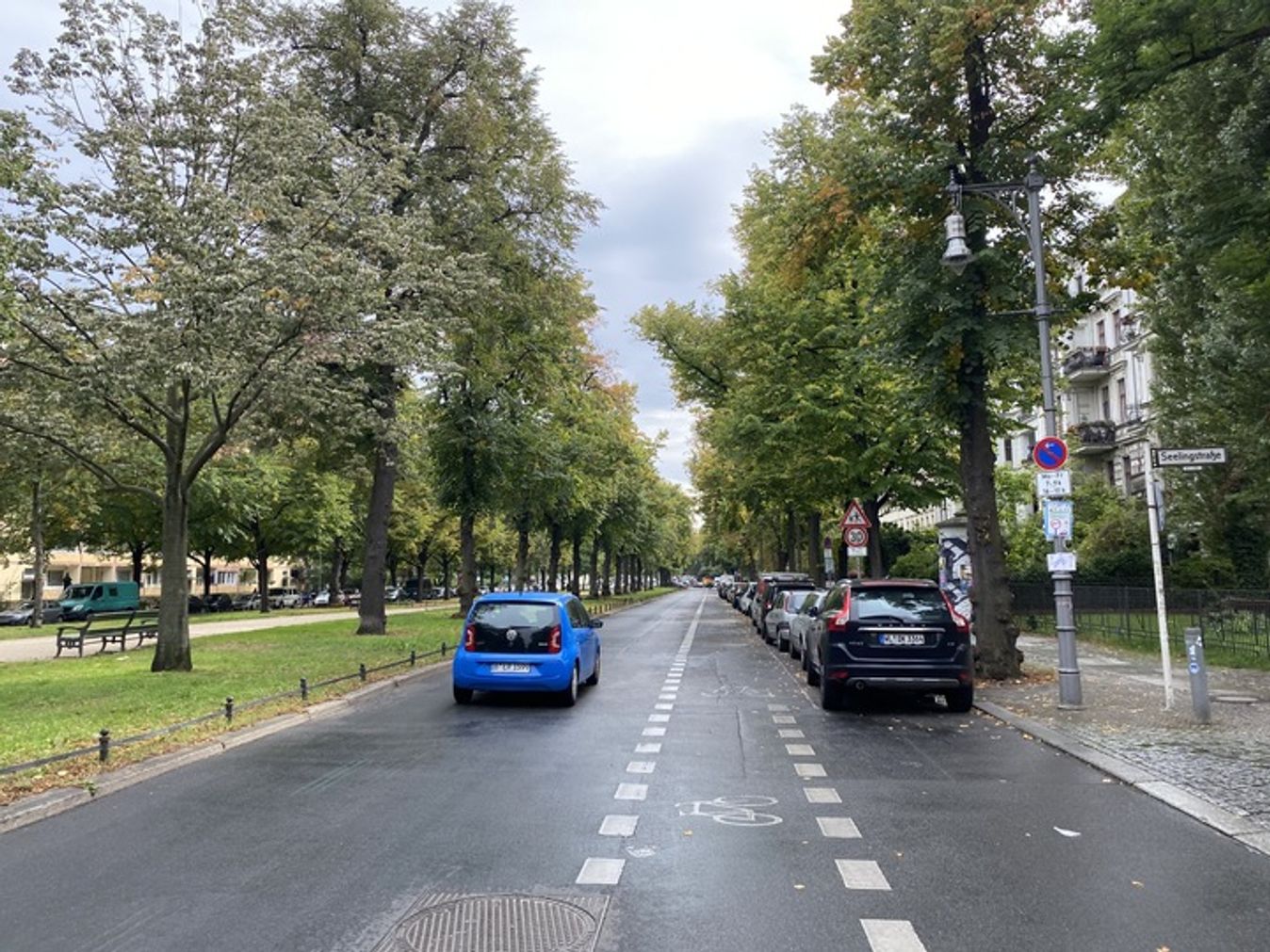
© GCN
A cycle lane in Berlin
Common sense tells us that both those things are likely true. Cities that build bike lanes rather than multi-lane carriageways can generally find more room for green spaces. And as we’ve seen, cities with more cycling infrastructure see higher levels of cycling, meaning the cities are quieter, safer and less polluted.
Why these results matter
For many of us, these two findings will not be of any great surprise. However, it is exciting to think that now, we have data to prove what many of us know intuitively.
Our cities need to shift towards active travel, but without absolute proof that more bike lanes are a good thing, many will drag their heels.
These findings give planners and governments an empirical backing that they can use to make a case for more cycling infrastructure.
Hopefully, the results will give them the bravery to make decisions that lead to healthier, less polluted and more pleasant cities.
For more of the latest transport updates, visit our general news page.
